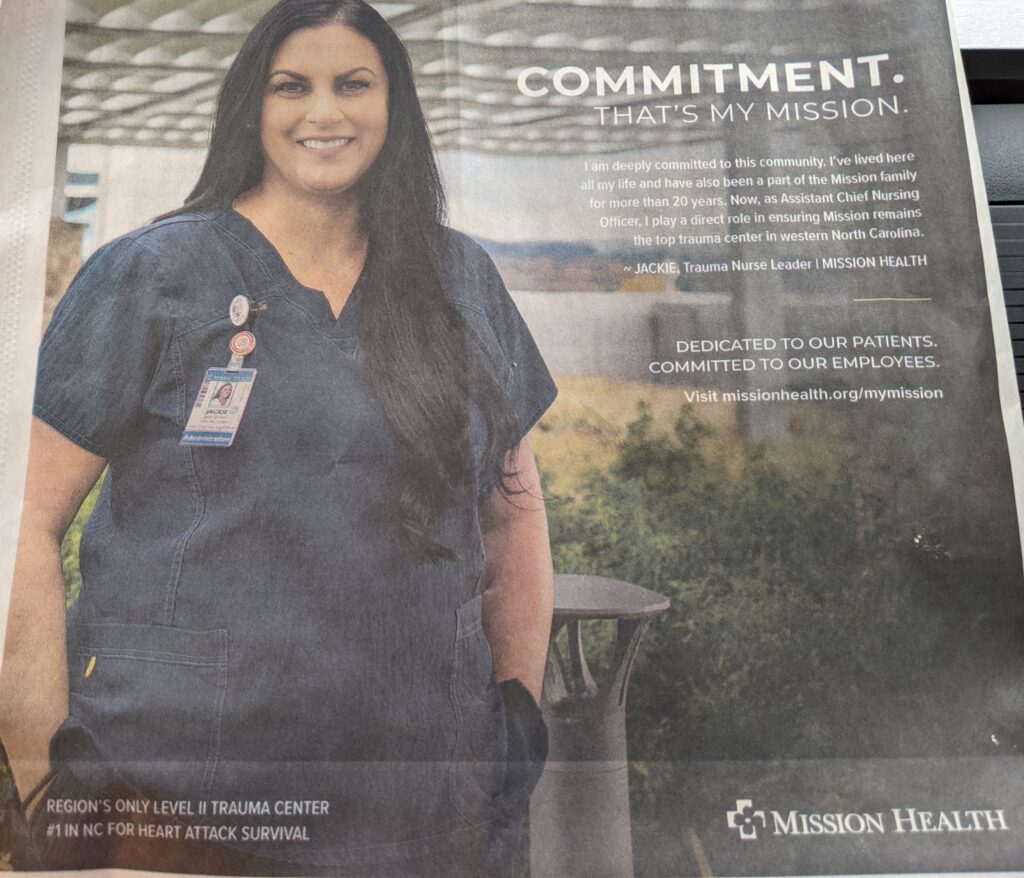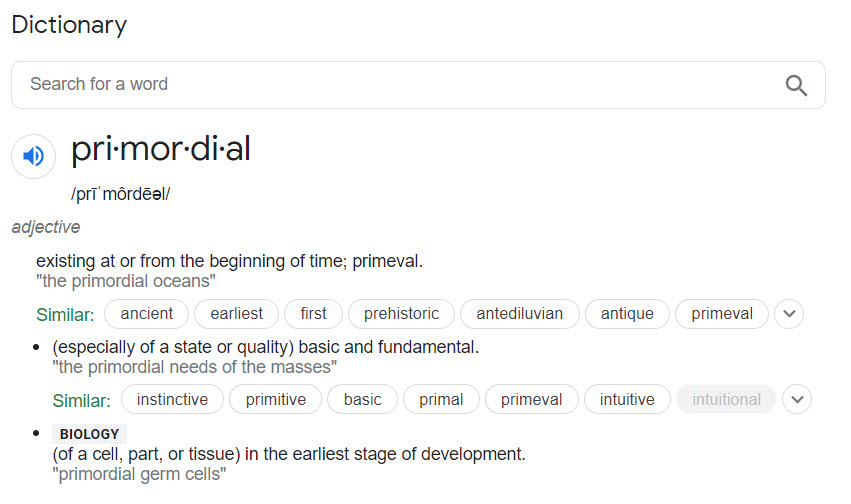Badvertising.
Mission Health headquartered in Asheville, NC and owned by for-profit hospital group HCA out of Nashville has been under fire for a couple of years since its purchase. Quality of care issues have arisen, as have the cost of care, and physician attrition. Mission has some image work to do.
Hospitals are notoriously bad advertisers. The occasional big brand hospital invests in a good ad agency and the work turns out well, but that’s the exception.
The ad herewith from Mission Health is an example of poor ad craft.
The one-word headline “Commitment” is lazy. Even with the subhead “That’s my mission,” an obvious play on the brand name, the line is meaningless. These are the words of trauma Nurse Jackie, the ad’s visual:
“I am deeply committed to this community. I’ve lived here all my life and have also been a part of the Mission family for more than 20 years. Now, as Assistant Chief Nursing Officer, I play a direct role in ensuring Mission remains the top trauma center in Western North Carolina.”
Below this quote are the words “Dedicated to our patients. Committed to our employees.
Let’s parse the communications. Nurse Jackie is committed. That’s the claim. But the only proof of this (commitment) claim (better known as reason to believe) is that she has worked at Mission for 20 years and been promoted.
You can’t make a claim in an ad and not prove it. It’s a waste of money. And commitment is just about the most common ad strategy for hospitals since “care and caring.”
I really, really want Mission to succeed. They do a lot of good medical work in the community. But when it comes to advertising (and branding) they’re not committed.
Peace.







